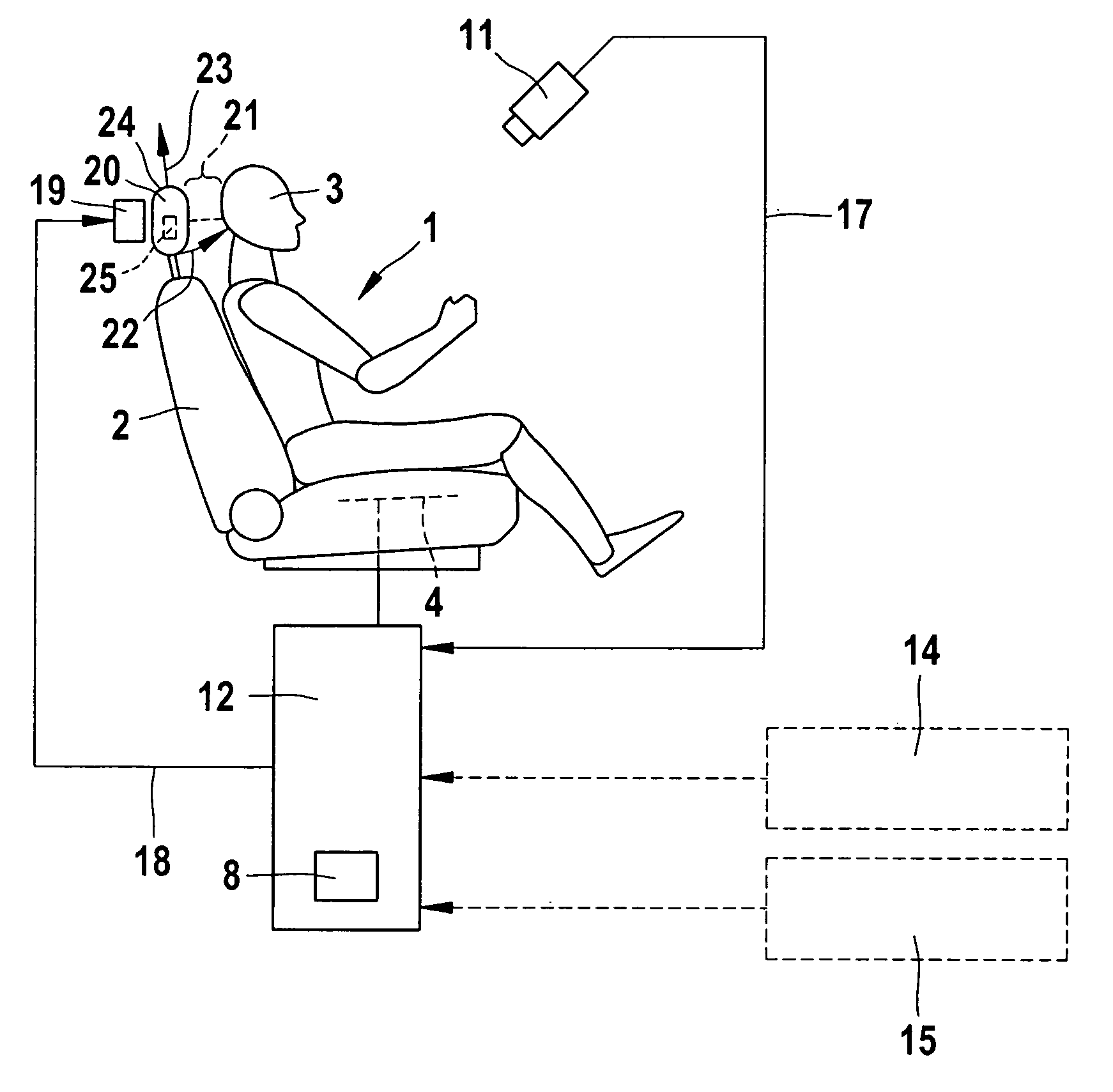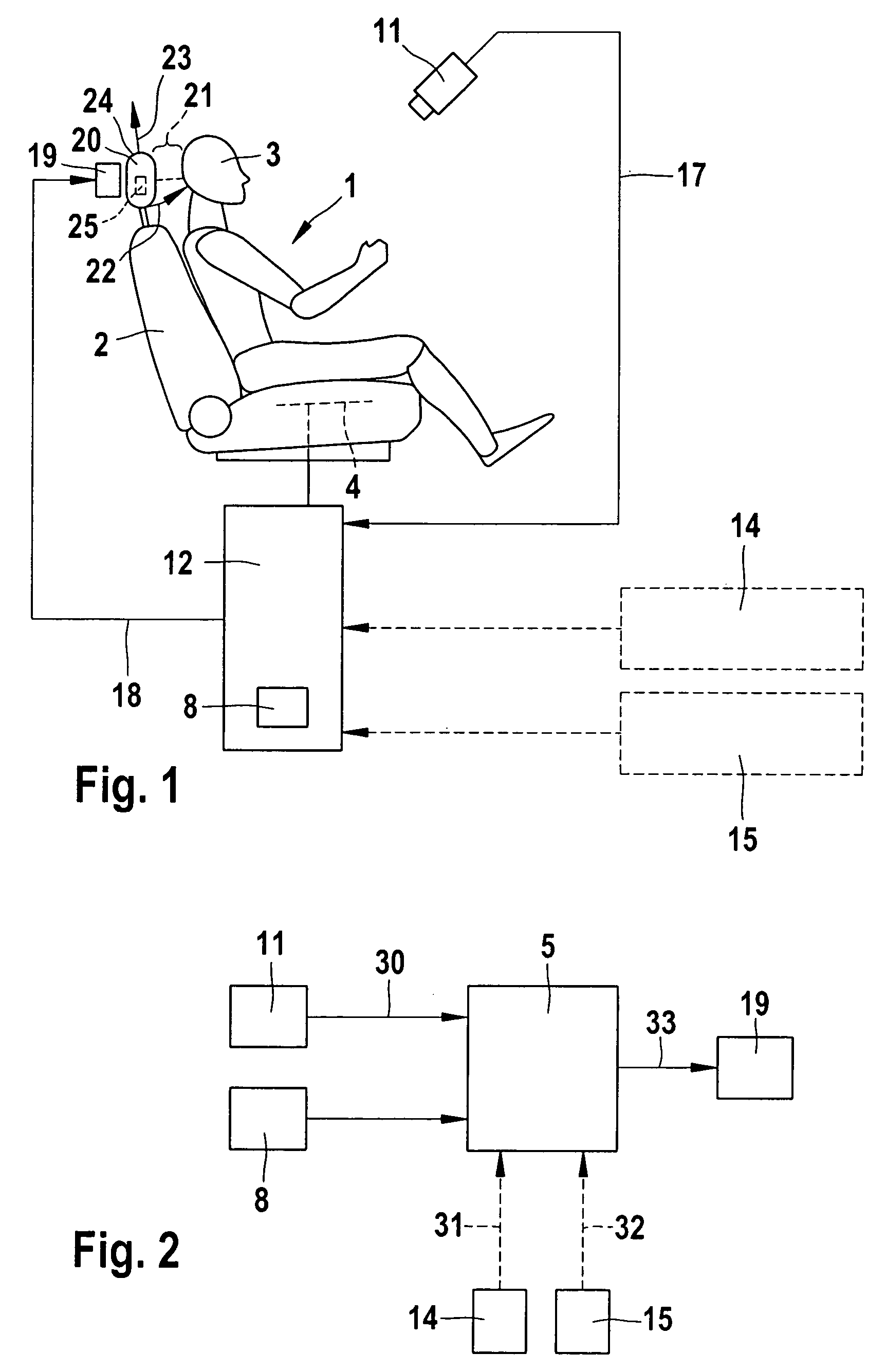Passenger-protection device in a vehicle
a technology for protecting devices and passengers, which is applied in the direction of electric devices, pedestrian/occupant safety arrangements, tractors, etc., can solve the problems of head thrown back in a kind of bounce, serious injuries, and overstretching of the cervical spine in a backward movement of the head, so as to increase the detection speed and speed up the detection speed of the passenger protection device. , the effect of increasing the accuracy of a detection
- Summary
- Abstract
- Description
- Claims
- Application Information
AI Technical Summary
Benefits of technology
Problems solved by technology
Method used
Image
Examples
Embodiment Construction
[0015] The passenger-protection device according to the invention may be used in a wide variety of motor vehicles. Especially advantageous is its use in motor vehicles in which high acceleration values may occur in the event of a collision, which may be reduced, however, by taking appropriate protective measures. According to the present invention, one or several body parts of the passengers are monitored by suitable sensors which are arranged in the vehicle interior, in particular. The monitoring is implemented by ascertaining a movement of these body parts. An acceleration at which the detected body parts move in the vehicle interior, is preferably ascertained from the movement. If a predefined acceleration limit is exceeded in the process, it must be assumed that the movement of the body part is not based on a movement that was controlled or caused by the passenger him / herself. Instead, a movement that was produced as a result of a sudden acceleration of the vehicle (for instance...
PUM
 Login to View More
Login to View More Abstract
Description
Claims
Application Information
 Login to View More
Login to View More - R&D
- Intellectual Property
- Life Sciences
- Materials
- Tech Scout
- Unparalleled Data Quality
- Higher Quality Content
- 60% Fewer Hallucinations
Browse by: Latest US Patents, China's latest patents, Technical Efficacy Thesaurus, Application Domain, Technology Topic, Popular Technical Reports.
© 2025 PatSnap. All rights reserved.Legal|Privacy policy|Modern Slavery Act Transparency Statement|Sitemap|About US| Contact US: help@patsnap.com



